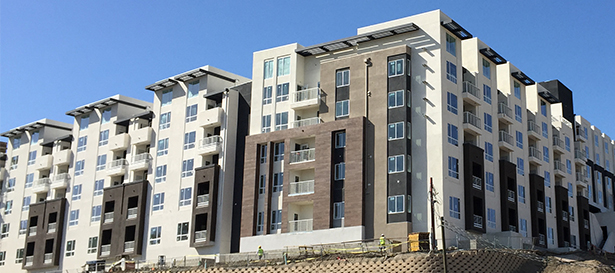Top Reasons Why Composites Make Great Shade Structures
 Pultruded Fiber Reinforced Polymer (FRP) has emerged as a game-changer in the realm of architectural shade structures, offering a plethora of advantages that make it an ideal choice for architects and designers alike. From its unparalleled durability to its versatility in design, pultruded FRP is revolutionizing the way we approach shade solutions in architectural projects. Even though this use for pultruded FRP has been around for many decades, its popularity has expanded quickly in recent years due to a greater desire to build structures with reduced maintenance costs, reduced environmental impacts, and a better overall cost of ownership.
Pultruded Fiber Reinforced Polymer (FRP) has emerged as a game-changer in the realm of architectural shade structures, offering a plethora of advantages that make it an ideal choice for architects and designers alike. From its unparalleled durability to its versatility in design, pultruded FRP is revolutionizing the way we approach shade solutions in architectural projects. Even though this use for pultruded FRP has been around for many decades, its popularity has expanded quickly in recent years due to a greater desire to build structures with reduced maintenance costs, reduced environmental impacts, and a better overall cost of ownership.
Strength-to-Weight Ratio
One of the most compelling reasons for choosing pultruded FRP for architectural shade structures is its exceptional strength-to-weight ratio. FRP is incredibly lightweight compared to traditional building materials like steel, yet it boasts impressive strength properties, making it suitable for spanning large distances without compromising structural integrity. This characteristic allows architects to design expansive shade structures with minimal support points, creating open and airy spaces that seamlessly integrate with their surroundings.
Durability
Moreover, pultruded FRP offers unparalleled durability and resilience against harsh environmental conditions. Unlike steel, which is susceptible to corrosion and rust, FRP is inherently resistant to corrosion, making it ideal for outdoor applications where exposure to moisture and UV radiation is inevitable. This inherent resistance ensures that FRP shade structures maintain their structural integrity and aesthetic appeal for years to come, with minimal maintenance requirements.
Design Flexibility
In addition to its durability, pultruded FRP provides architects with unparalleled design flexibility. FRP can be molded into virtually any shape or form, allowing architects to unleash their creativity and design shade structures that are not only functional but also visually stunning. Whether it's curved canopies, intricate patterns, or geometric shapes, FRP offers endless possibilities for creating unique and captivating architectural elements that enhance the overall aesthetic of a space. Pultruded FRP generally conforms to a constant cross section, but architects are combining the strength of pultrusions with alternative composite materials for areas where odd shapes, tapers, or curves make traditional pultruded components less suitable.
Sustainability
Furthermore, pultruded FRP is inherently sustainable, making it a preferred choice for environmentally conscious projects. Unlike traditional building materials like steel or concrete, which require significant energy inputs and produce large amounts of carbon emissions during production, FRP has a relatively low carbon footprint. This eco-friendly attribute aligns with the growing demand for sustainable building practices and allows architects to incorporate green solutions into their designs without compromising on performance or aesthetics.
In conclusion, pultruded FRP stands out as an excellent choice for architectural shade structures due to its exceptional strength, durability, versatility, and sustainability. As architects continue to push the boundaries of design, FRP offers the perfect combination of performance and aesthetics, allowing them to create innovative shade solutions that redefine the built environment. With its myriad benefits, pultruded FRP is undoubtedly paving the way for the future of architectural design.